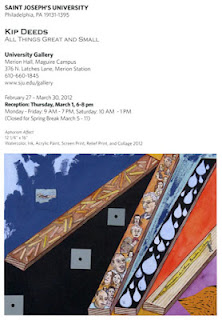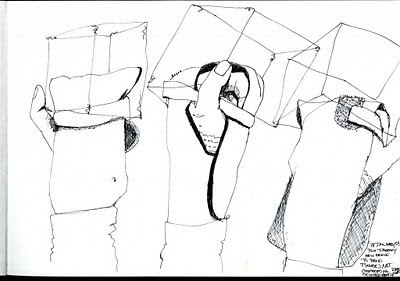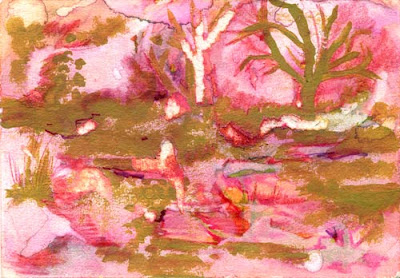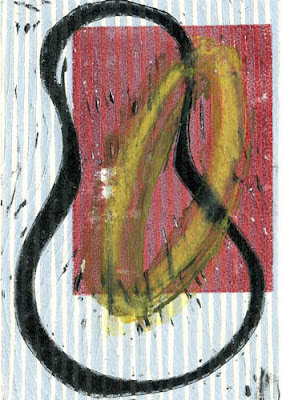Spring is not officially here, but in Pennsylvania the colors associated with spring are starting to arrive. It seems like overnight the cherry blossoms have appeared and soon apple blossoms will follow. I am seeing the ending of winter contrasted by the start of spring. Below is an image from one of my walks through my neighborhood.

I feel like my blog went into hibernation over the winter because of my less than frequent posts. Here I am highlighting another “Viewfinder” and the artwork of Paul Schumann. I think of Paul as a thoughtful and serious person, but he also has a sharp if hidden sense of humor. Although he was educated as an artist and printmaker, he later went through training to become an army chaplain. Paul has a patient and steady personality that has allowed him to handle the stresses of recent tours in Afganistan. His patience is also evident in his artwork which merges observation with other worldly visions.

Paul sent me a “Viewfinder” that seems to focus on observation (for information about the first “Viewfinder” and this project click here). However, what I found compelling was how it was juxtaposed with an ad for ornamental hunting knives that he also sent me. Of course he was joking about making this kind of object but it does point to a kind of conceptual chiaroscuro. This is also compelling because in a more literal way Schumann does focus on contrasts between light and dark values in much of his other work (example above). Wether it is the push and pull of seasonal change or the shift between contrasting color, seeing these extremes allow us to appreciate all that is between.












